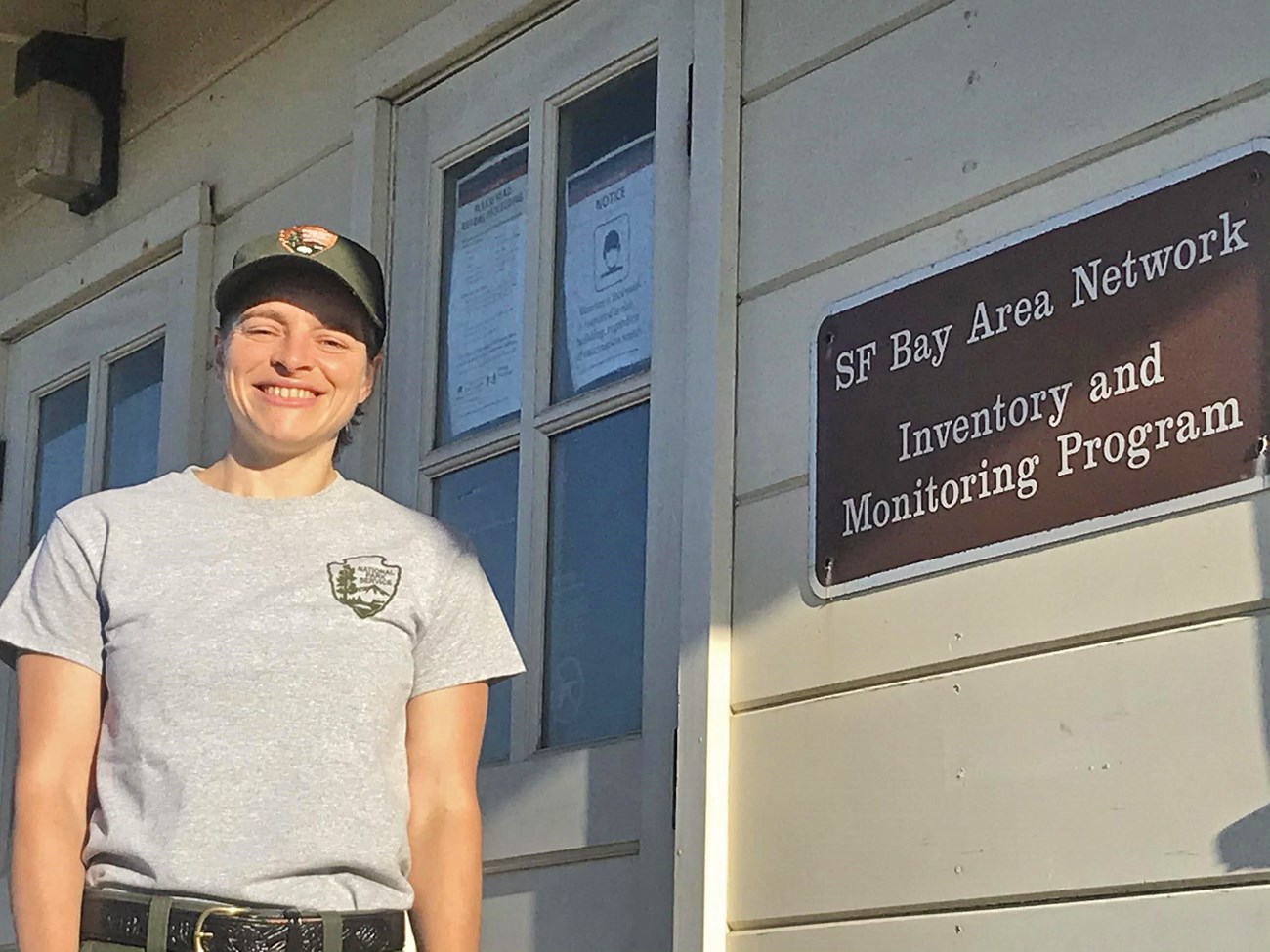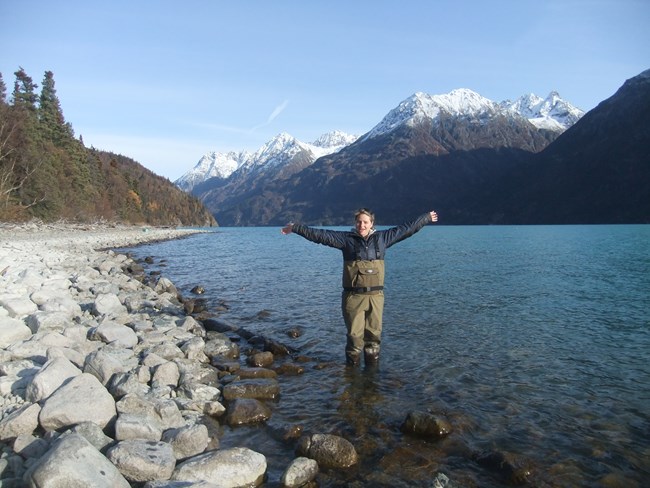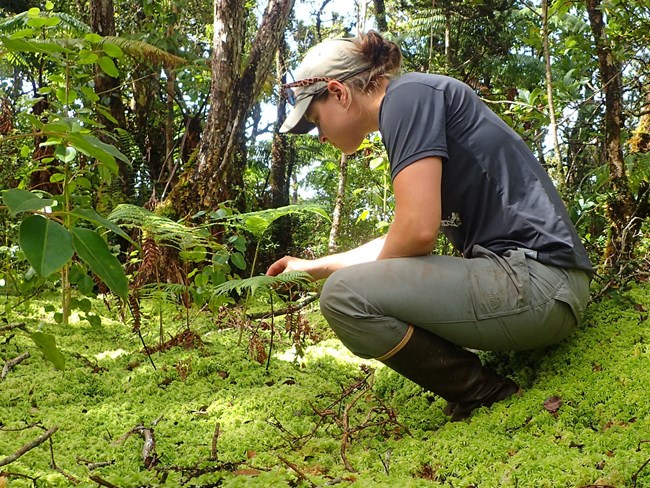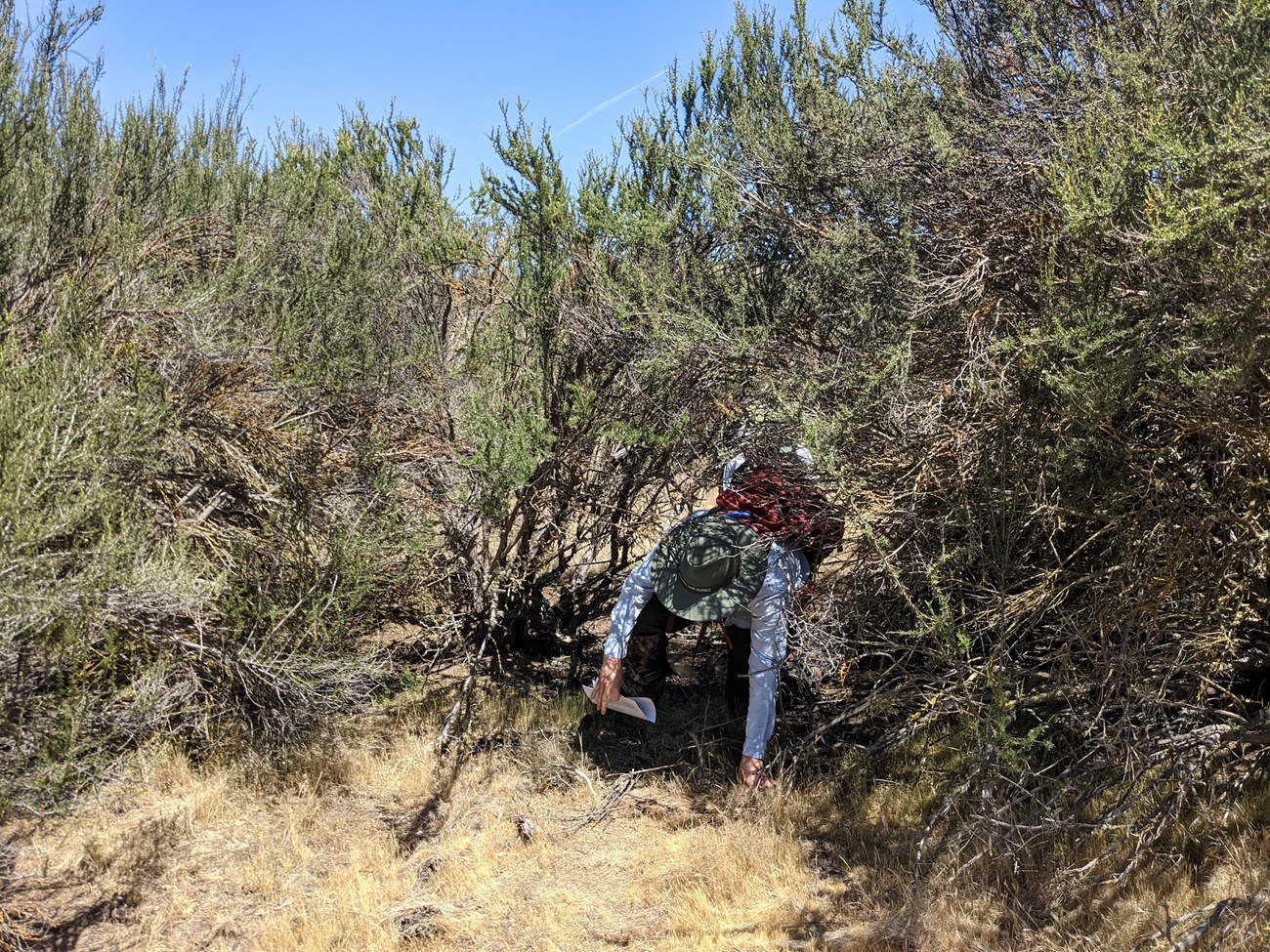Last updated: July 10, 2025
Article
Scientist Profile: Lisa Schomaker, Botanist

NPS
On Discovering Herself Outdoors…
"I have always been a lover of the outdoors. I am happiest with a pack on my back and my feet paving a trail. As a kid, my family vacationed at National Parks across the West in our minivan and tent. I was a shy kid, but always felt most comfortable being active outside."
"Some of my earliest memories are from campfire talks given by interpretive rangers. While camping under an International Dark Sky at Wheeler Peak in Great Basin National Park, I specifically remember the ranger calling me out with some other young kids to embody the mythological characters that represented the stories of the constellations above us. The interpretive ranger named me Andromeda, and that felt really important!"
"My first backpacking trip was at three years old. I don't remember actually carrying anything, but I do remember the big green grapes and LifeSaver candies that my parents would tuck into the bark of trees ahead on the trail, to keep my siblings and me moving forward. It was a while before I understood that grapes didn't sprout from the trunks of conifers. But maybe that motivated the whole botany trajectory!"
On Finding Botany...
"The first time I seriously considered biology as a career was while completing my undergraduate senior thesis at Reed College. I chose to study signs of air pollution in Douglas-fir trees by comparing populations within the Portland metropolitan zone to those in the Cascade foothills. It was exciting to go through the full scientific process: from asking a question and designing a study to analyzing the data and writing up a thesis. I always knew I wanted to work outdoors in some capacity, and through this experience I realized research could be a great way to do that."

Courtesy Lisa Schomaker
On Working for the Parks…
"My first job in the parks was a summer internship for Student Conservation Association at Lava Beds National Monument, in the high desert and volcanic plains of north-central California. While leading a Youth Conservation Corps program focused on invasive species removal, I was also introduced to plant population mapping, fire effects monitoring, native species nursery management, habitat restoration, and environmental education. It was so rewarding to live and work in a unique, remote park, and in turn, to feel like my work was directly improving the place I lived."
"After college, I completed another internship with Student Conservation Association at Lake Clark National Park and Preserve in Alaska. Just being in Alaska was a real catalyst for me and I ended up working at Lake Clark and other parks in the southwest Alaska region for the following four years. I started out in fisheries research, literally counting sockeye salmon as they swam by. By my final season, I was able to redirect and become a field botanist with the Southwest Alaska Network’s plant community monitoring crew. That was my introduction to the National Park Service's Inventory and Monitoring Division and the awesome collaborative work we do with park scientists and managers."

Courtesy Lisa Schomaker
"Alaska was such an inspiring place for me, both for the people I met and the places where I was lucky enough to work. Ultimately, those years in Alaska led me to pursue a master's degree in Botany at the University of Wisconsin-Madison. One of the plant communities that became an interest of mine during my time in Alaska was the peat bog. At UW-Madison I found multiple opportunities to work in this type of vegetation community. Ultimately, I completed my thesis with Dr. Sara Hotchkiss, looking at the spread of a particular peat moss (Sphagnum palustre) through montane wet forest on the Big Island of Hawai'i. While working on my thesis, I also explored some long-term data collected at high elevation bogs in Haleakala National Park on Maui. While I was never able to visit those field sites, it was exciting to look at the change over time and to think about the important role that long-term datasets play in addressing the big questions of climate change."
On Starting Out at the San Francisco Inventory and Monitoring Network...
"As the San Francisco Inventory and Monitoring Network's Botanist, I oversee two protocols for the Network: Plant Community Monitoring and Invasive Species Early Detection. My first season here has been jam-packed with fieldwork. After a few months of catching up on protocols and reports and acquainting myself with several new habitats and species, I hired two technicians and hit the ground running in early April. The focus this season was Plant Community Monitoring, as funding constraints prevented us from carrying out our Invasive Species program. Since April, we have visited bald hills prairie in the Golden Gate National Recreation Area's Marin Headlands, grasslands in Pinnacles National Park, dune scrub and coastal terrace prairie inPoint Reyes National Seashore, and coast live oak woodland in both Point Reyes National Seashore and Golden Gate National Recreation Area. We've encountered several hazards along the way, with ticks and poison oak mounting a strong offensive, but it's all been worth it to be out in the field collecting a ton of quality data. I am still new at my job here, but I am excited by the potential for the projects I oversee. I also look forward to resuming more normal operations as the pandemic lessens in severity. It will be so nice to finally meet my colleagues in person! I am also excited to bring the Invasive Species program back in 2022. Long-term monitoring data are so important, and it is a privilege to be able to contribute to and work with these robust datasets."

NPS / Danielle Parsons
On Life Outside of Work…
"I love backpacking and generally being active outside. Of course, I am already drawn to plants, but birds have grabbed my attention more over the last decade. I hope to eventually become as good a birder as my dad. When not out hiking, I've been known to join in a game of ultimate frisbee or soccer. I also love cooking and have spent a lot of time over the last year trying to fine-tune my use of a table-top convection oven for bread making and pie baking."
Reflection and Insights...
"Take breaks from work and remind yourself often of why you do what you do. We face so many challenges: not just environmental, but also cultural, social, economic, and so on. Each little bit of data we collect helps us understand our world a little better, and that understanding can take us a long way."
Interview by Mackenzie Morris, September 2021.
Further Reading
Tags
- golden gate national recreation area
- john muir national historic site
- pinnacles national park
- point reyes national seashore
- scientist
- biologist
- botanist
- botany
- nps careers
- san francisco bay area
- sfan
- science
- people
- ecologist
- plants
- invasive plants
- plant communities
- nrss careers
- meet the scientist
- women in science
- monitoring
- profile
- inventory and monitoring division
- ised
- pcm
